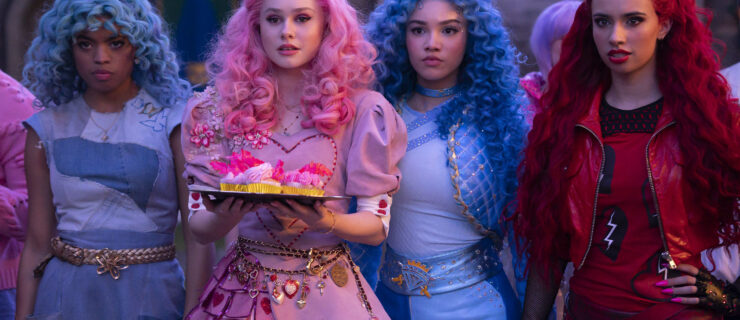Scandal on the Dance Floor
Stately, graceful waltzes and fiery tangos steal the show on “So You Think You Can Dance” and “Dancing With The Stars.” But did you know that when they appeared on the scene, they were totally taboo—and in some cases even banned? Social dances have long been an important part of culture and community, and tend to reflect progressive undercurrents in society: “They are a cultural metaphor,” explains Chrystelle Bond, a professor of dance at Goucher College and director of Chorégraphie Antique, a historical dance ensemble. Many dances that we consider mainstream today were initially deemed outrageous, distasteful or downright dangerous!
Here are some dances from the last few centuries that raised eyebrows when they first appeared on the scene.
The Waltz (1830s-40s)
When the waltz debuted in Europe in the 19th century, most other popular dances involved little or no contact between partners. The waltz, in contrast, required dancers to hold their partners in what’s now considered standard ballroom position—the woman’s left hand on her partner’s shoulder, the man’s hand on the lady’s waist.
“The idea of holding somebody in an embrace in public while dancing was too risqué, too scandalous,” says Richard Powers, a social dance historian at Stanford University. In fact, etiquette manuals printed in the U.S. in the 1830s forbade women from waltzing! Julie Malnig, a dance historian at New York University, points out that one book in particular, Donald Walker’s Exercises for Ladies (1836), went so far as to state that the waltz’s fast spins might cause women to suffer vertigo or spinal injuries. The waltz finally became acceptable in America after the polka grew popular in 1844. Though the polka used the same position as the waltz, “it was seen as clean fun” because of its “good-natured, sunny” spirit, Powers says. It convinced people that the waltz might not be dangerous after all.
The Tango (early 1900s)
The tango, an Argentine dance, took the world by storm in 1912. Like the waltz, partners were in an embrace. However, the tango called for slower, more sensuous movement and an intimate emotional connection between partners. In particular, the way tango dancers intertwined their limbs and pressed their chests together shocked high society—as did the fact that the woman took a stronger, more passionate role in the partnership (she was almost the man’s equal!). The dance drew fire from some religious groups. In fact, a Roman Catholic cardinal—as well as some Protestant ministers and priests—banned the dance a few years after its inception! Though the exact timeline of the tango ban is unclear, it’s generally acknowledged to have been lifted around the time that tango dancers were invited to perform for the Pope. The tango’s place in pop culture was cemented when silent film star Rudolph Valentino performed it on the silver screen in the 1921 movie The Four Horsemen of the Apocalypse.
The Charleston (1920s)
At the turn of the 20th century, Americans placed a lot of value in purity and self-restraint. Fast forward to the 1920s, and young people were eager to break free of these ideas. Women abandoned corsets in favor of loose-fitting clothes, cut their hair and wore short skirts and, most importantly, were newly empowered by the right to vote. It was in this rebellious, revolutionary spirit that the Charleston gained tremendous popularity.
Though the dance didn’t require contact with a partner, traditionalists disliked that it featured women in short skirts dancing with what Powers calls “an abandoned spirit.” Bond adds that women at Goucher College were suspended for doing this dance, even in the privacy of their all-female dorm rooms!
Rock ’n’ Roll (1950s)
When it comes to social dances, “one thing that always pushes people’s buttons is the music,” Malnig explains. This was certainly true in the case of rock ’n’ roll, which Elvis Presley brought to mainstream America in the 1950s. Though parents worried about the music’s sexual undertones and innuendo, teens enthusiastically embraced the dances that went with it—the jerk, the stroll and the hand jive were all popular, but the most taboo was the twist, which featured suggestive hip and torso isolations.
Another reason many older Americans were suspicious of rock ’n’ roll were the “African-American origins of the dance,” Malnig explains. “[Some people] equated African-American elements with heightened sensuality. There was an element of racism at work here.” So what changed? Not only did the civil rights movement take hold in the following decade, but TV programs like “American Bandstand” also helped make rock ’n’ roll more acceptable.
Social dance can reflect major changes in our culture, forcing people to question their ideas about morality, sexuality and the role of women in society. So the next time you and your friends hit the dance floor with some new moves, just think: You might be making history!



